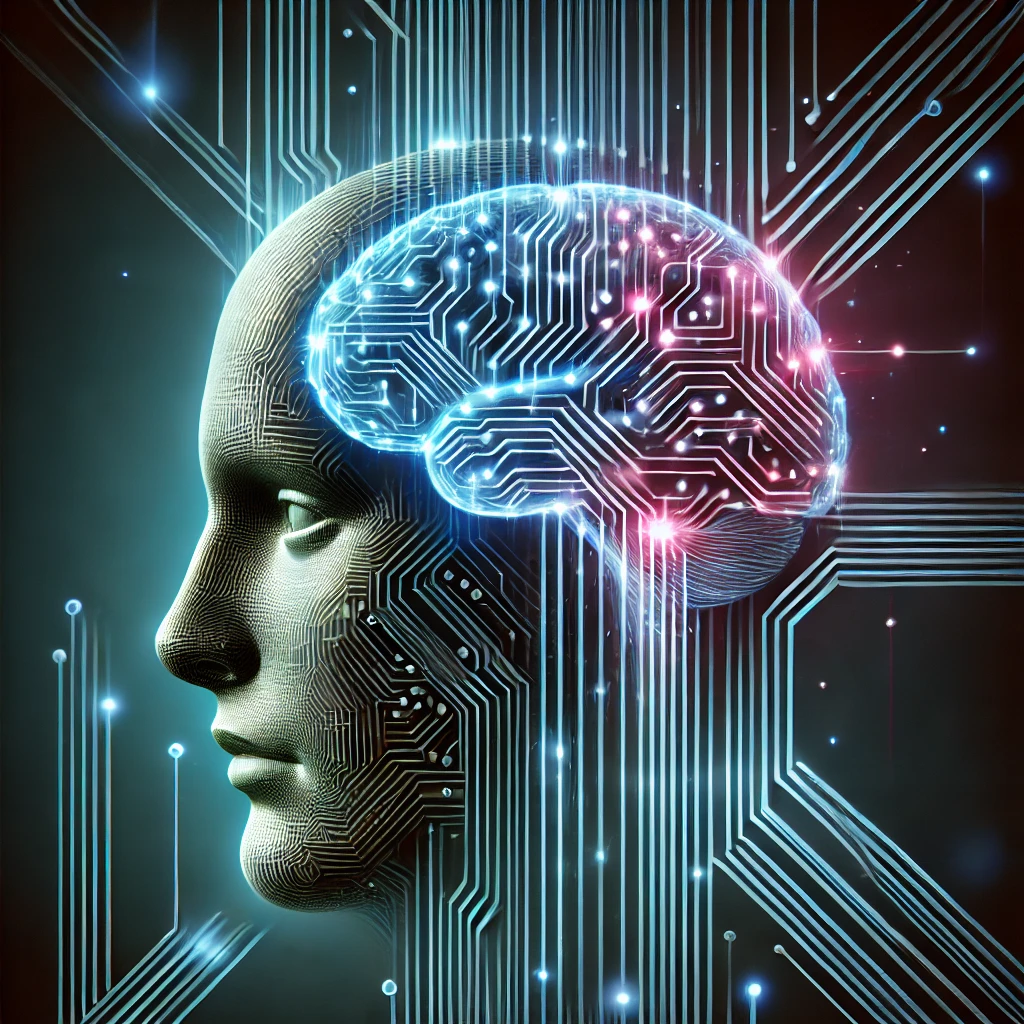10 Groundbreaking Updates That Are Shaping the Future — With Analysis, Context, and Critical Insight
“The best way to predict the future is to build it.” — Peter Drucker
Latest AI News This Week: What’s Really Happening in the World of Artificial Intelligence
The latest AI news this week shows just how fast technology is moving. From AI voice assistants that sound almost human to tools that can write code by themselves and even create 3D worlds, the progress is incredible. If you’re following the latest AI news this week, you’ve probably seen big announcements and exciting updates.
But this article goes beyond the headlines. We’ll explore what these new AI tools can actually do, their real-world limits, and what they mean for developers, content creators, and everyday users. Whether you’re a tech enthusiast or just curious about the latest AI news this week, you’ll find clear insights here.
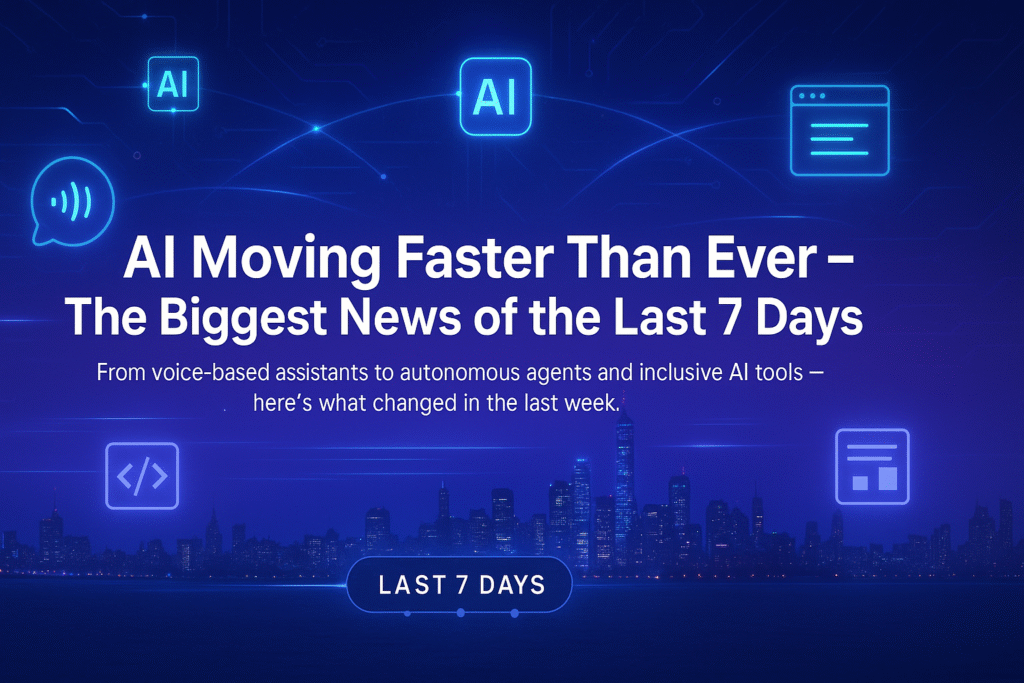
Why This Matters Now
We’re not just seeing incremental upgrades — we’re witnessing fundamental shifts in how AI understands context, interacts with humans, and performs complex tasks autonomously.
These tools are being developed at a time when:
- AI is becoming more multimodal (text, voice, image, 3D)
- Accessibility is moving from an afterthought to a priority
- Autonomous workflows are no longer science fiction
- And the line between human and machine creativity continues to blur
Let’s dive into the most important updates from the last week — and examine them through a lens of realism, opportunity, and caution.
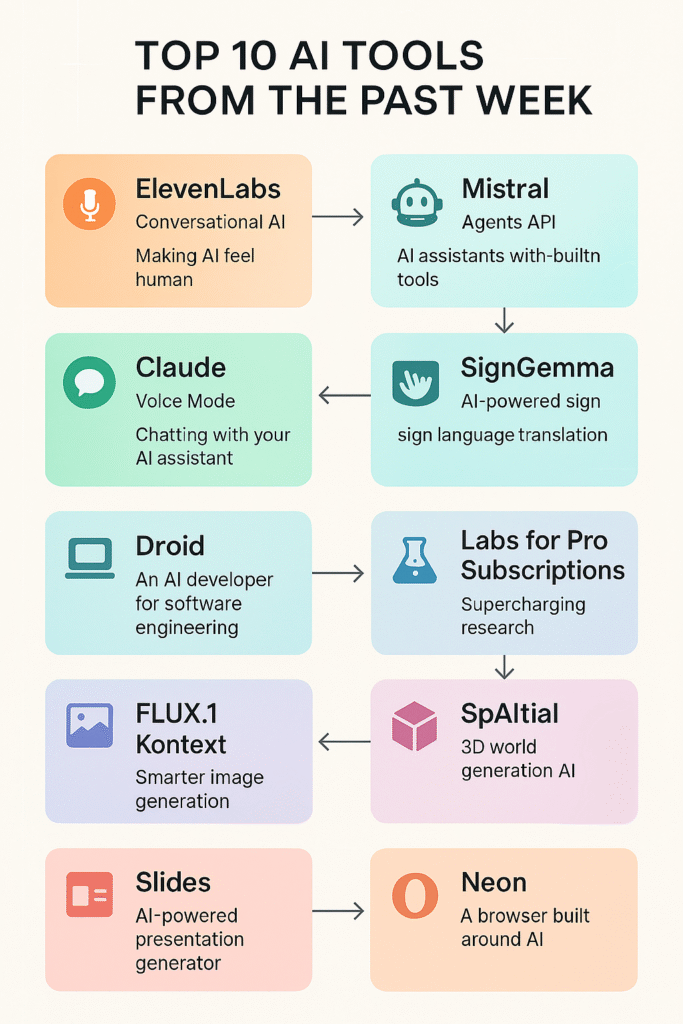
1. ElevenLabs Releases Conversational AI 2.0 – Making AI Feel Human
📅 Released: April 2, 2025
🔗 Official Announcement: ElevenLabs Blog Post
On April 2, 2025, ElevenLabs released Conversational AI 2.0 , a major upgrade to its voice-based interaction system. Unlike earlier versions that felt robotic and fragmented, this update allows for fluid, emotionally responsive dialogue — making conversations with AI assistants feel closer than ever to talking with a real person.
💡 What’s New:
- Natural back-and-forth dialogue : No more awkward pauses or repetitive questions.
- Emotional tone recognition : The system adjusts its speaking style based on user sentiment.
- Context retention : Maintains conversation flow across topics and sessions.
- Voice personalization : Users can customize speech patterns, accents, and even emotional delivery.
🧠 Why It’s Big:
This marks a turning point in voice-first AI interfaces . Whether you’re dictating notes while driving, managing customer support bots, or building educational tools, the ability to have coherent, nuanced conversations matters.
⚠️ Limitations & Concerns:
- Still lacks long-term memory for multi-day conversations
- Emotional cues aren’t always accurate
- Some users report occasional repetition loops
- Ethical concerns around deepfake misuse remain
👥 Who Benefits Most?
- Content creators using AI-generated voiceovers
- Customer service teams using chatbots
- Anyone who prefers voice over typing
📌 Try it : ElevenLabs Website
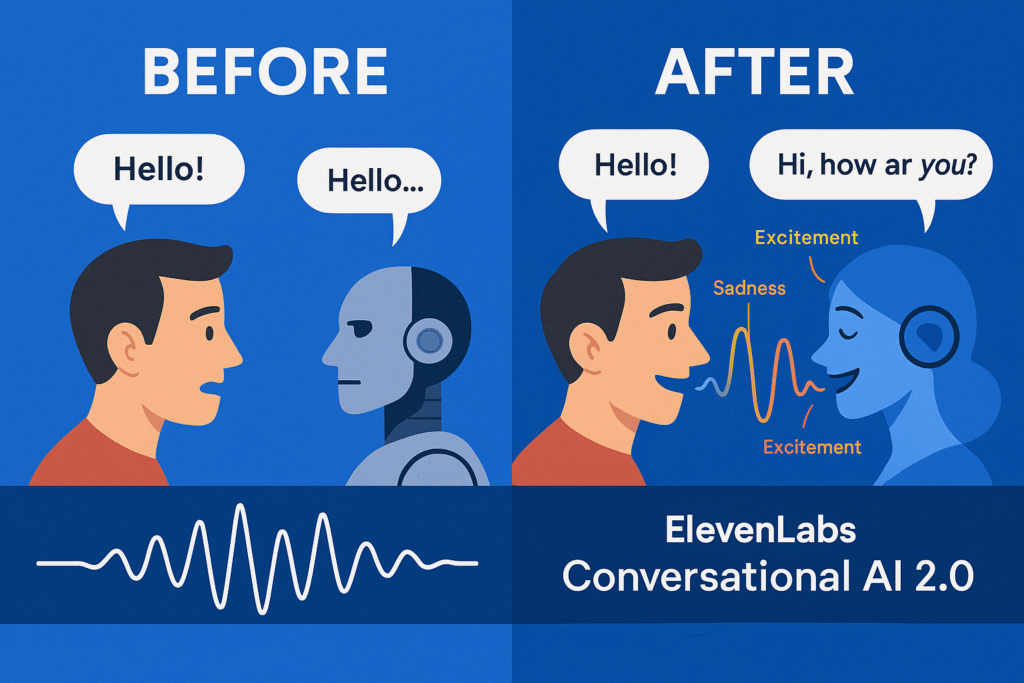
2. Mistral Launches Agents API – AI Assistants with Built-in Tools
📅 Released: March 31, 2025
🔗 Official Announcement: Mistral AI Blog
Mistral AI quietly rolled out its Agents API , giving developers the power to create self-operating assistants capable of performing multi-step tasks like research, planning, and execution.
💡 What’s New:
- Run multiple AI agents simultaneously
- Use pre-integrated tools (web search, code execution, etc.)
- Manage workflows and decision-making automatically
- Scalable for enterprise use
🧠 Why It’s Big:
This isn’t just another chatbot API — it’s a framework for building full-scale AI teams. Developers can now design systems where AI handles everything from booking flights to writing reports without constant human oversight.
⚠️ Limitations & Concerns:
- Early access only; documentation is still sparse
- Requires technical setup for integration
- Potential for unintended behavior if not carefully monitored
- Raises ethical questions about automation and job displacement
👥 Who Benefits Most?
- Developers building automation tools
- Businesses looking to reduce manual tasks
- Researchers experimenting with agent-based AI
📌 Learn More : Mistral AI Agents API
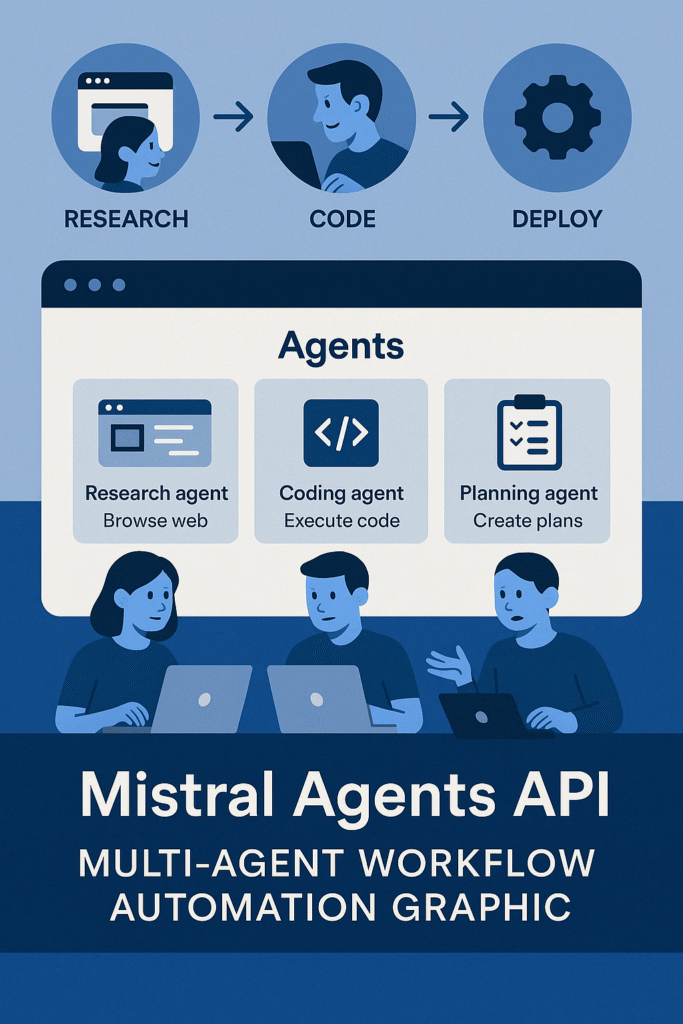
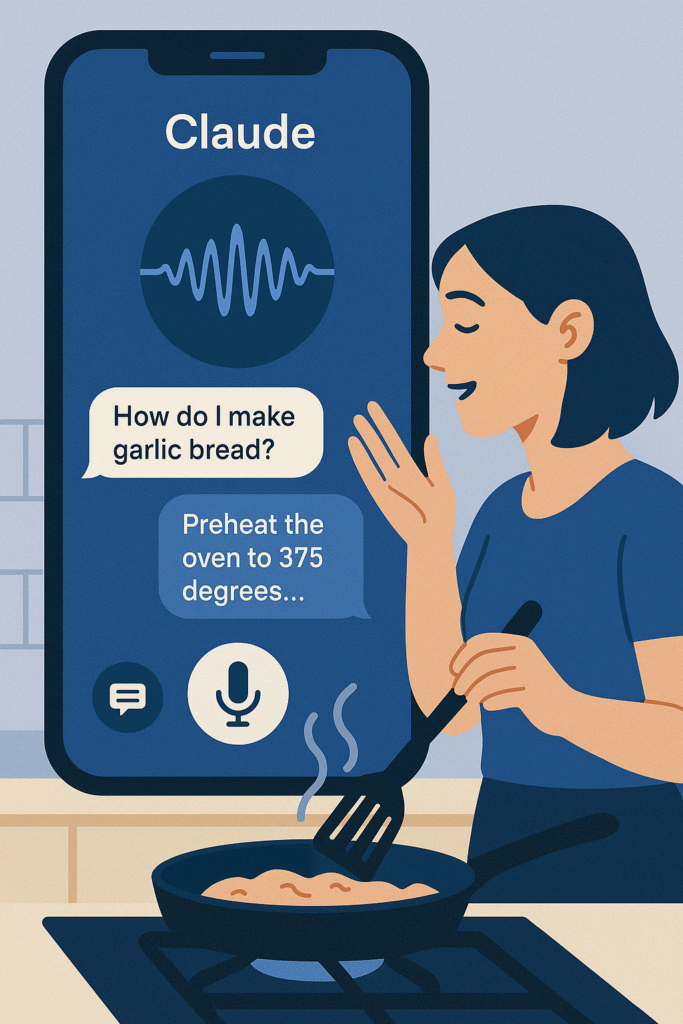
3. Claude Introduces Voice Mode – Chatting with Your AI Assistant
📅 Released: April 1, 2025
🔗 Official Announcement: Claude Blog
Anthropic’s AI model, Claude , launched Voice Mode , allowing users to interact with the AI using speech instead of typing — a move clearly aimed at competing with voice-first platforms like Apple’s Siri and Amazon Alexa.
💡 What’s New:
- Real-time spoken responses
- Context-aware conversation history
- Easy toggle between voice and text
- Available on both desktop and mobile
🧠 Why It’s Big:
Voice mode makes AI more accessible and hands-free. Whether you’re driving, cooking, or multitasking, you can now talk to your AI assistant naturally — and get meaningful answers.
⚠️ Limitations & Concerns:
- Still struggles with heavy accents and background noise
- Privacy concerns around always-listening features
- Not yet as robust as GPT-4o-level models in terms of voice quality
👥 Who Benefits Most?
- Busy professionals
- Visually impaired users
- Anyone who wants faster, more intuitive AI access
📌 Try it : Claude App
4. Google Unveils SignGemma – AI-Powered Sign Language Translation
📅 Released: April 3, 2025
🔗 Official Announcement: Google Research Blog – SignGemma
Google announced SignGemma , a new AI model designed to translate sign language into text and speech in real time. This open-source initiative represents a major step toward inclusive communication.
💡 What’s New:
- Supports multiple sign languages
- Runs on lightweight devices
- Real-time translation with high accuracy
- Open-source for research and development
🧠 Why It’s Big:
For the first time, hearing-impaired individuals can communicate more freely with AI systems and others through automatic translation. This could revolutionize how public services, education, and workplaces accommodate sign language users.
⚠️ Limitations & Concerns:
- Limited regional dialect support
- Accuracy varies depending on lighting and gesture clarity
- Still experimental — not yet ready for widespread deployment
👥 Who Benefits Most?
- Deaf and hard-of-hearing communities
- Educators and interpreters
- Public institutions aiming for accessibility
📌 Learn More : Google Research Blog – SignGemma
5. Factory AI Introduces ‘Droid’ – An AI Developer for Software Engineering
📅 Released: April 4, 2025
🔗 Official Announcement: Factory AI Blog
Factory AI introduced Droid , an AI system trained to write, debug, and maintain code independently. While other models assist with coding, Droid aims to be a full-stack AI developer.
💡 What’s New:
- Understands full codebases
- Generates clean, functional code
- Debugs errors and suggests fixes
- Integrates with popular IDEs
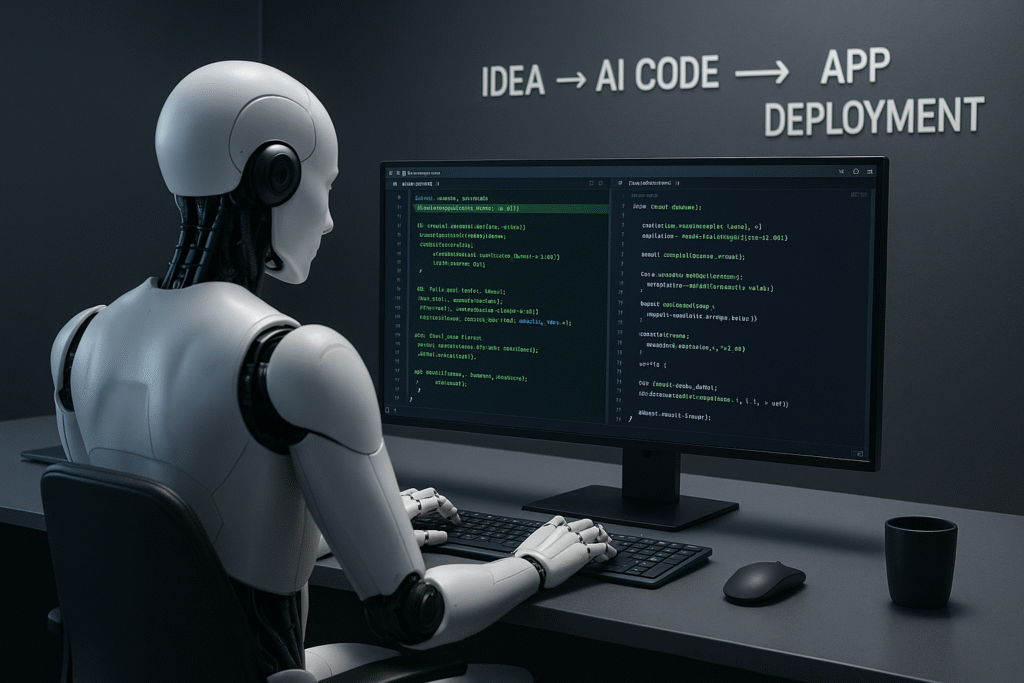
🧠 Why It’s Big:
Droid isn’t just another code autocomplete tool — it’s a full-stack AI developer. It can help junior devs learn, assist senior devs in refactoring, and even handle basic app development solo.
⚠️ Limitations & Concerns:
- Still struggles with complex logic flows and edge cases
- May encourage overreliance among new developers
- Code quality depends heavily on training data
- Legal and licensing issues remain unclear
👥 Who Benefits Most?
- Startup founders
- Software engineering teams
- Students learning to code
📌 Try it : Factory AI Droid
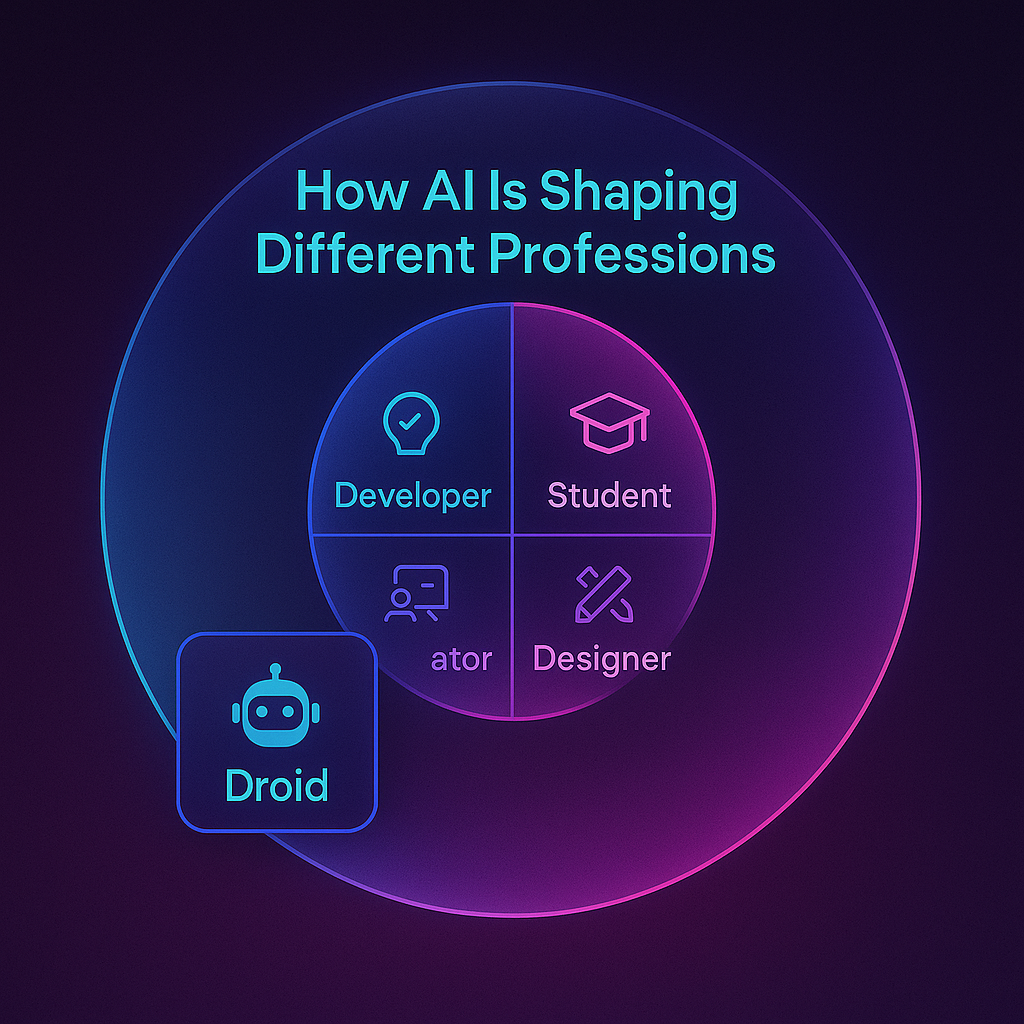
6. Perplexity Launches Labs for Pro Subscriptions – Supercharging Research
📅 Released: April 5, 2025
🔗 Official Announcement: Perplexity Blog – Introducing Labs
Perplexity AI, the search engine that uses AI to deliver concise, sourced answers, has launched Labs for Pro Users , offering experimental tools and enhanced research features designed for professionals, students, and researchers.
💡 What’s New:
- Customizable search modes (casual, academic, expert)
- Real-time web results from trusted sources
- Advanced citation tracking with direct links
- Personalized knowledge graphs based on user queries
Perplexity Labs is not just a feature upgrade — it’s a shift toward AI-powered research as a service , where users can ask complex questions and get well-synthesized, source-backed answers in seconds.
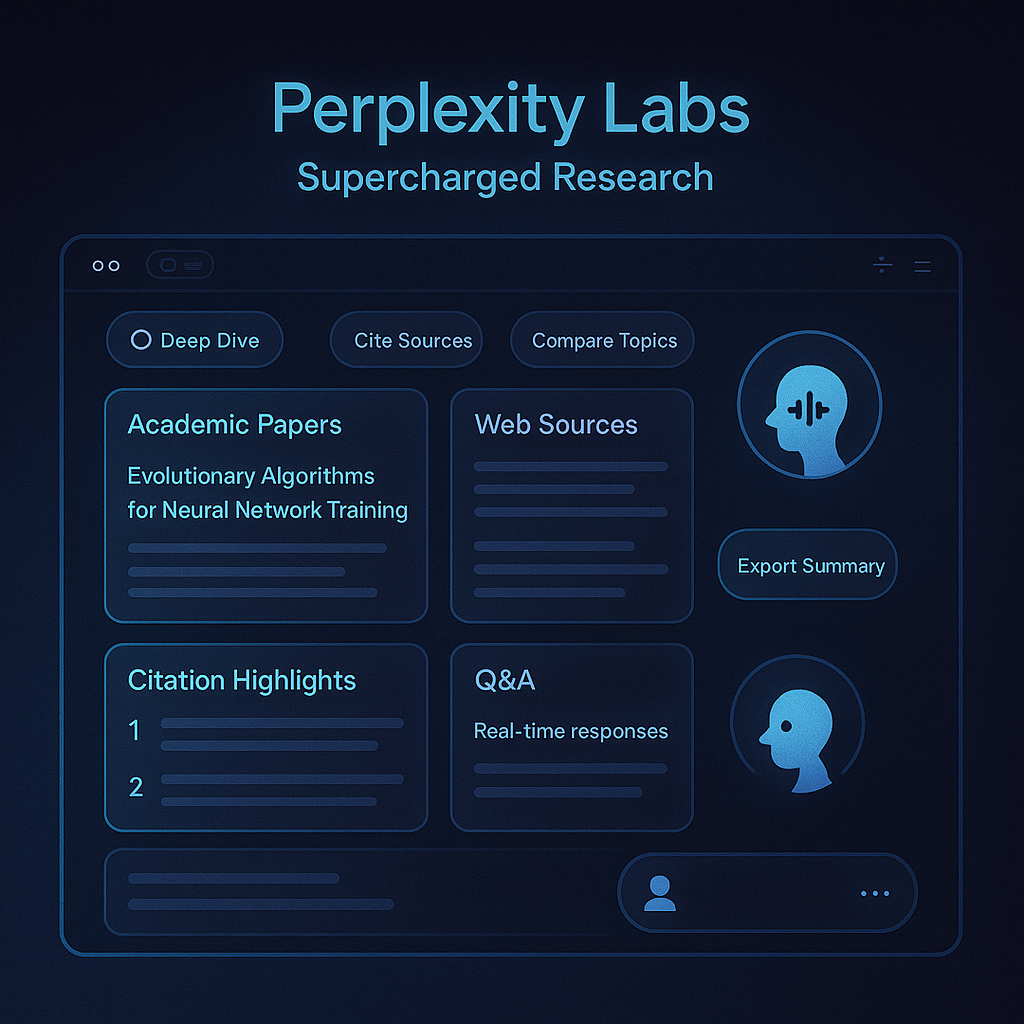
🧠 Why It’s Big:
For anyone who spends hours digging through Google Scholar, news sites, or niche forums, Perplexity Labs offers a curated, intelligent alternative . The system doesn’t just return links — it summarizes findings, compares sources, and even explains conflicting viewpoints.
This could be especially useful for:
- Journalists fact-checking stories
- Students compiling research papers
- Business analysts doing competitive intelligence
⚠️ Limitations & Concerns:
- Still relies heavily on public web content — limited access to paywalled journals
- Citation accuracy varies depending on source reliability
- Some users report inconsistent depth of coverage
- Premium-only feature may limit accessibility
👥 Who Benefits Most?
- Academics and journalists
- Business analysts
- Anyone doing deep research
📌 Try it : Perplexity Labs
7. Black Forest Labs Releases FLUX.1 Kontext – Smarter Image Generation
📅 Released: April 4, 2025
🔗 Official Announcement: Black Forest Labs Blog
Black Forest Labs, the team behind FLUX.1, has released FLUX.1 Kontext , an updated image generation model that improves contextual understanding and consistency across generated visuals.
💡 What’s New:
- Enhanced prompt interpretation using semantic mapping
- Consistent character and scene generation across multiple outputs
- High-resolution output (up to 8K) with better detail control
- Commercial-use license included by default
Unlike earlier models that often misinterpreted spatial relationships or repeated elements awkwardly, FLUX.1 Kontext understands not just what you say but how different parts of your request relate to each other.
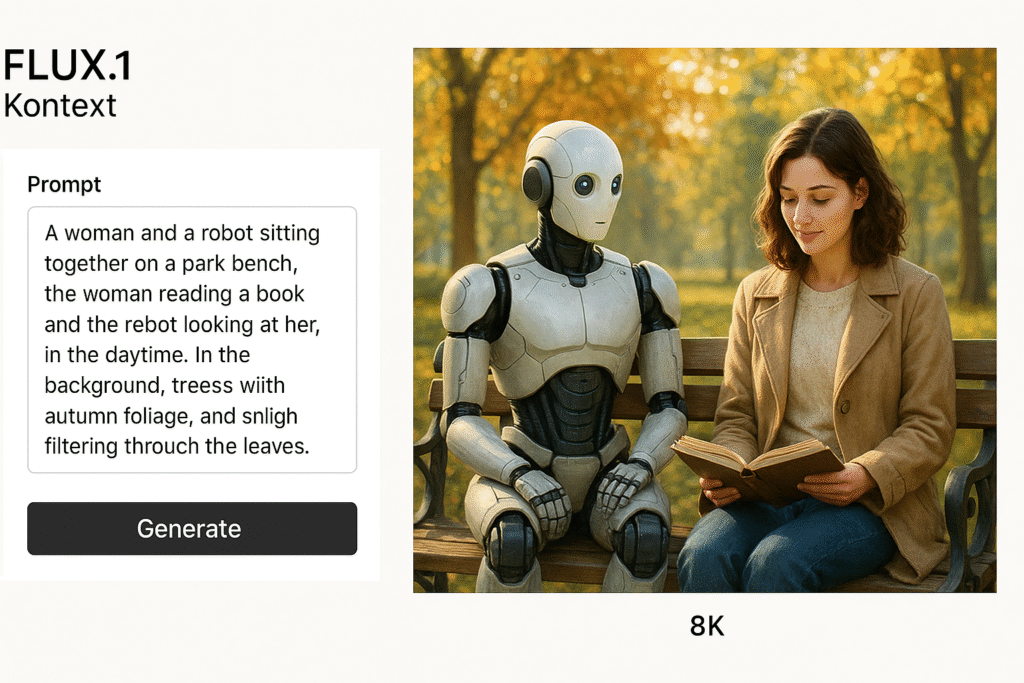
🧠 Why It’s Big:
This update brings AI-generated art closer to professional-grade quality . Designers, marketers, and game developers can now generate images that are more usable “out of the box” — reducing the need for extensive post-editing.
It also sets a new standard for creative workflows , allowing teams to brainstorm and iterate faster than ever before.
⚠️ Limitations & Concerns:
- Limited training data for non-Western aesthetics
- Some ethical concerns around deepfake misuse
- Requires powerful hardware for optimal performance
- Still struggles with abstract concepts and surreal prompts
👥 Who Benefits Most?
- Graphic designers
- Marketers and content creators
- Game developers
📌 Try it : Black Forest Labs
8. SpAltial Raises $13M for 3D World Generation AI
📅 Funding Announced: April 3, 2025
🔗 Official Announcement: SpAltial Press Release
Startup SpAltial has raised $13 million in seed funding to develop AI that generates detailed 3D environments automatically — a move that could revolutionize how virtual spaces are created for gaming, architecture, and the metaverse.
💡 What’s New:
- Instant 3D world creation from text prompts or sketches
- Customizable assets and layouts with real-time preview
- Compatibility with Unity and Unreal Engine
- Scalable for games, metaverse, AR/VR, and architectural visualization
SpAltial’s AI isn’t just placing objects randomly — it learns from existing environments to build realistic, coherent 3D scenes that feel like they were made by human designers.
🧠 Why It’s Big:
Creating immersive 3D spaces used to take weeks or months. With SpAltial’s AI, it can happen in minutes — opening up new possibilities for:
- Indie game developers
- Architects creating visualizations
- Metaverse builders
- VR experience designers
The company claims its tool can reduce design time by up to 90% , making high-quality 3D content accessible to smaller teams and solo creators.
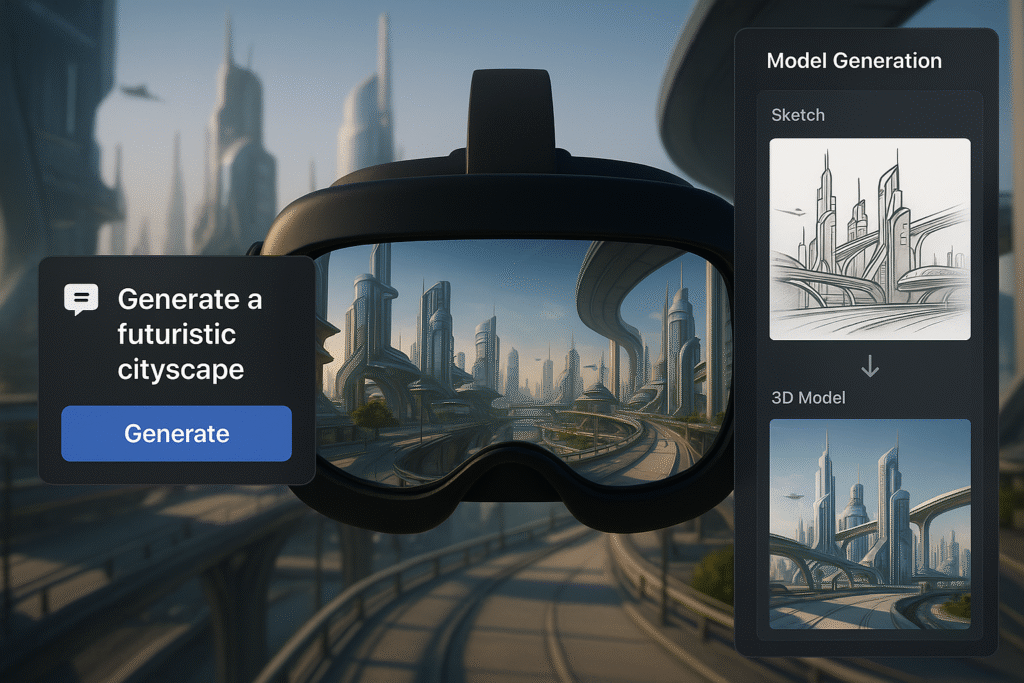
⚠️ Limitations & Concerns:
- Still early-stage; not publicly available yet
- Quality depends on input specificity
- May face competition from established 3D platforms
- Ethical concerns around unauthorized use of real-world locations
👥 Who Benefits Most?
- Game developers
- Metaverse builders
- Architects and urban planners
📌 Follow Their Journey : SpAltial Official Site
9. Manus Launches Slides – AI-Powered Presentation Generator
📅 Released: April 5, 2025
🔗 Official Announcement: Manus Blog – Introducing Slides
Manus, known for its AI writing assistant, has launched Slides , an AI tool that creates professional presentations in seconds based on your input.
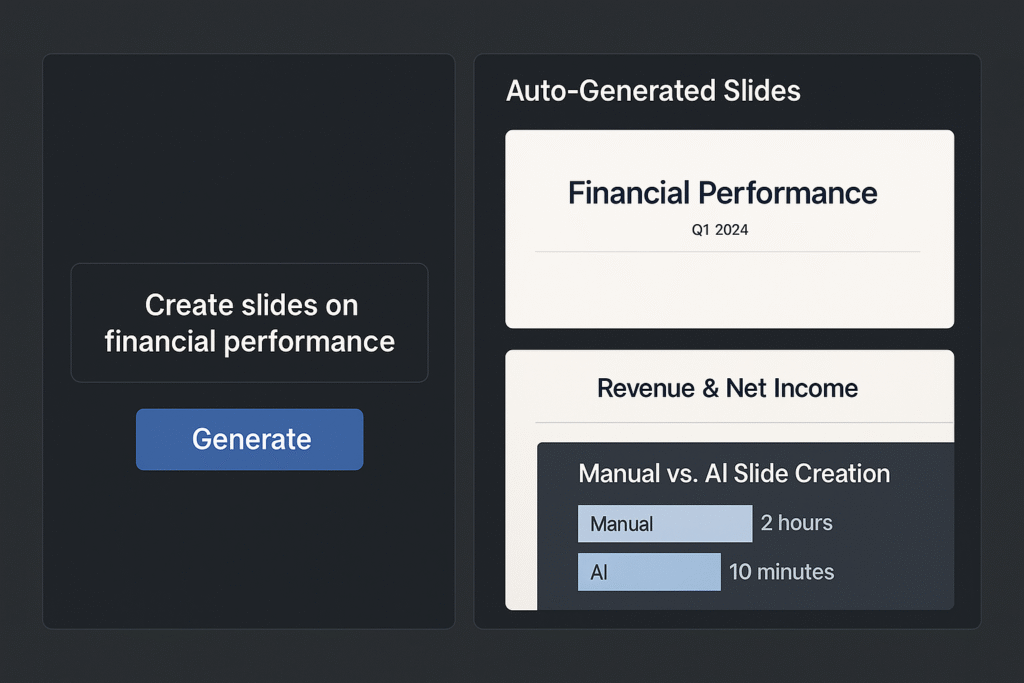
💡 What’s New:
- Automatic slide layout and design based on content
- Smart content suggestions for clarity and flow
- Export to PowerPoint and PDF
- Editable templates for customization
Rather than forcing users into rigid templates, Manus Slides adapts to your message — generating clean, visually appealing slides tailored to your topic and tone.
🧠 Why It’s Big:
Say goodbye to hours spent formatting slides. With Slides, you just type what you want, and the AI does the rest — beautifully. This is particularly valuable for:
- Entrepreneurs pitching ideas
- Educators preparing lessons
- Professionals summarizing reports
It’s not just about saving time — it’s about improving communication by ensuring your message is presented clearly and professionally.
⚠️ Limitations & Concerns:
- Limited branding customization options
- Some users find design choices too minimalist
- Not ideal for highly technical or data-heavy slides
- Risk of over-reliance on AI-generated structure
👥 Who Benefits Most?
- Students
- Entrepreneurs
- Professionals preparing reports
📌 Try it : Manus Slides
10. Opera Launches Neon – A Browser Built Around AI
📅 Released: April 6, 2025
🔗 Official Announcement: Opera Neon Product Page
Opera has launched Neon , a browser designed from the ground up with AI integration — signaling a major shift in how we interact with the web.
💡 What’s New:
- Built-in AI sidebar for quick tasks and summaries
- Web highlighting and summarization with one click
- Smart tab organization based on context
- Integrated chat and voice commands
Neon isn’t just another browser — it’s a glimpse into the future of browsing, where AI helps you navigate, understand, and interact with the web more intelligently.
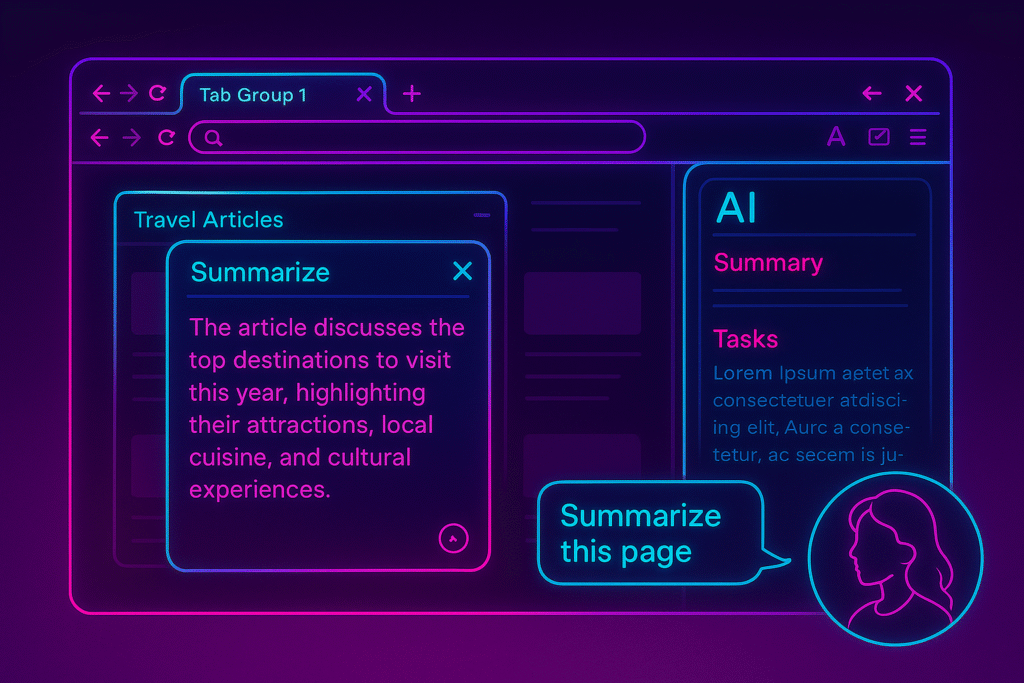
🧠 Why It’s Big:
This browser represents a new class of AI-native interfaces — where AI isn’t an add-on, but a core part of the user experience. Features like instant summarization, smart tab grouping, and voice navigation make browsing faster and more intuitive.
It could be especially useful for:
- Researchers and writers
- Heavy internet users
- Anyone overwhelmed by tabs and information overload
⚠️ Limitations & Concerns:
- Currently only available on select platforms
- AI features require cloud connectivity
- Privacy concerns around data collection
- Some features still in beta and unstable
👥 Who Benefits Most?
- Heavy internet users
- Researchers and writers
- Anyone overwhelmed by tabs and information overload
📌 Download Neon : Opera Neon
✅ These Tools Are Not Just Hype
What makes this week’s announcements significant isn’t just the number of updates — it’s the depth and diversity of applications.
From conversational AI that feels human to autonomous agents handling complex tasks, from inclusive sign language translation to AI-powered browsers — these tools collectively point to a future where AI is:
- More accessible
- More intelligent
- More human-like
- And more deeply integrated into our daily lives
Whether you’re a developer, designer, researcher, or simply someone curious about tech, there’s something here for you.
And while we should remain critical — questioning accuracy, privacy, and ethics — we can’t ignore the momentum.
Because one thing is clear:
AI is moving faster than ever — and it’s not slowing down.
Putting It All Together: What These Updates Mean for You
These aren’t just isolated developments — they represent a shift in how AI is being integrated into every layer of our digital lives.
From communication and creativity to development and accessibility, AI is becoming more intelligent , accessible , and human-like .
Here’s a quick summary of how these tools impact different roles:
| Role | Most Useful Tool |
|---|---|
| Developer | Factory AI’s Droid |
| Designer | FLUX.1 Kontext |
| Student | Perplexity Labs |
| Entrepreneur | Manus Slides, Mistral Agents |
| Accessibility Advocate | Google SignGemma |
| Creator | ElevenLabs AI, Opera Neon |
Trend Watch: What These Tools Reveal About the Direction of AI
Looking at the broader picture, several trends emerge:
🧬 1. AI Is Going Multimodal
No longer limited to text, AI now processes and generates voice, images, 3D environments, and gestures — mimicking how humans perceive and interpret the world.
🤖 2. Autonomous Agents Are Here
Tools like Mistral’s Agents API signal the rise of AI workers — systems that don’t just answer questions but execute tasks and make decisions.
🎨 3. Creativity Is Being Democratized
With tools like FLUX.1 Kontext and Manus Slides, creative expression is becoming more accessible to non-experts.
🛑 4. Ethical Challenges Are Growing
As AI becomes more powerful, so do concerns around bias, misinformation, job disruption, and privacy .
Final Thoughts: The AI Revolution Is Here
The past few days have proven one thing clearly: AI is moving faster than ever , and it’s not slowing down.
Each of these tools opens up new possibilities — whether it’s making life easier, improving accessibility, or unlocking creative potential.
If you’re a developer, a creator, or just someone trying to stay ahead of the curve, now is the perfect time to explore these tools and see how they can enhance your workflow.
Ready to Stay Ahead? Bookmark our guide Technology and AI for updates!


